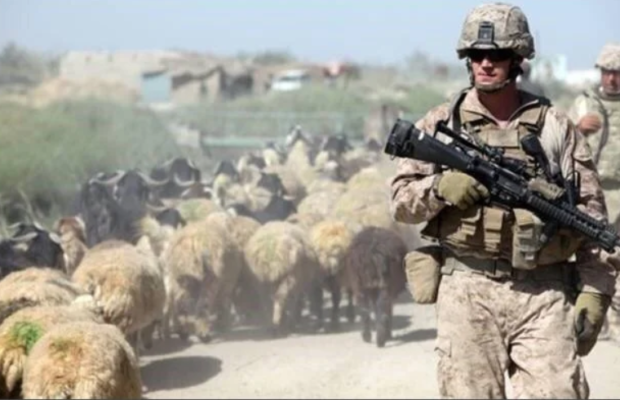Greetings, Everyday Spy,
Welcome to your newest #SpyHACK!
I’ve operated in nearly every climate our world has to offer.
The far north is colder than I ever imagined.
I’ve had to ski down mountains so cold that the skis don’t slide. Once it gets colder than -30℉, the physics of skiing simply stop working.
Your breath freezes to your lips and threaten your face with frostbite.
In the desert, heat rules everything.
Car engines suffer heat failure; blacktops melt bicycle tires; insects, animals, and even people clamor under any shade they can find.
The moisture in your body evaporates faster than you can sweat. Powerful, intense sunlight literally bakes your skin until it crisps and falls off in chunks.
Extreme heat and cold are responsible for 8% of worldwide deaths every day.
In the United States, 1,330 people are killed by extreme cold every year. At the same time, 412 Americans die of heat-related conditions. In both cases, the difference between those who survive and those who don’t is the same: exposure.
The human body cannot survive when it’s exposed to extreme temperatures for long periods of time. Your internal systems struggle to maintain the body’s core temperature (98.6℉). Once your internal temperature drops below 95℉ or peaks above 102℉, organs start to fail or shut-down all together.
While extreme heat and cold are challenging conditions for life, wet conditions are more common and even more dangerous.
Flooding can bring disease and pathogens that cover miles in minutes. Rain creates a fertile environment for bacteria, mold and fungus to grow and spread rapidly.
Infections carried by moisture kill 2.5 million people worldwide every year. In America, more than 25,000 people die every year from moisture-related infections.
And just like extreme heat and cold, the one factor separating those who survive from those who do not is exposure.
My training put me in some of the harshest, most dangerous conditions the human body can withstand.
Not to prove my strength, but to prove my survival.
The human body is a complex and dynamic machine. But to perform at its fullest potential, it must be protected. It needs to be kept between 96℉-99℉ and it needs to be dry.
The most important equipment elite operators carry is not their weapons, commo gear, or survival kit…
It is the clothing they wear during the operation itself.
‘Warm and dry’ is a mantra chanted in war-torn alleys and fortified walls around the world.
The one fabric you will find on every live operator – in the desert, in the jungle, or in the arctic – is wool.
Wonderful, durable, wool.
Wool is a natural fabric with incredible operational advantages.
- Water Resistant and Quick Drying
The organic structure of wool is similar to that of a bird’s feathers or a lizard’s scales. Microscopic layers overlap like roofing tiles, protecting the core of each fiber like a shield. When moisture comes in contact with wool, the water cannot penetrate through the layered tiles.
Additionally, wool fiber has a natural coil shape and protective wax layer called lanolin. The coil shape allows airflow between each fiber, encouraging rapid drying, while the lanolin works to wick wetness away from your skin. Whether the moisture comes from rain, sweat, or humidity, wool works to move water away from the body and into the open air.
- Thermal Balancing
Wool’s wicking action and coiled shape also maintain your body’s natural temperature, regardless of the conditions outside. In cold weather, wool holds your body heat in pockets between its fibers. Because of its resistance to moisture, it retains your body heat even when wet. That is why wool sweaters and jackets have been the hallmark of naval officers and sailors alike.
Even more impressive is the utility of wool in the heat. It’s natural durability means it can withstand long periods of direct sunlight without breaking down. As an outer layer in hot conditions, wool pulls the sweat off your skin and allows constant airflow to cool you down. Anytime I find myself in the tropics, the desert, or the jungle, my pants and socks are always wool.
- Anti-microbial
Wool has been used in hospitals, nurseries, and by field medics for centuries because of its resistance to bacterial growth. The same scales and waxy covering that prevents water from penetrating the fiber also protects against pathogens, bacteria and other germs. Robbed of moisture and a viable breeding ground, potential toxins die on the surface of wool and eventually wash away with air or water.
Light-weight and compact, wool garments can be easily compressed, carried, and stowed without fear of carrying or spreading unwanted nastiness.
Not every warzone is a battlefield. Wool has served me in my everyday life as well.
- Wrinkle Resistant
I travel with two kids, a wife, and a backpack everywhere I go. When it comes time for a business meeting or to appear on TV or film, I can’t show up in wrinkled cotton or crinkled polyester. So I pack wool.
My wool pants bounce back looking sharp whether I fold them nicely or wad them into a ball. Gravity and body heat naturally pull wrinkles out of my wool jackets. My wool socks take the biggest beating, exposed to sweat, leather, carpet and tile day-after-day. And even after multiple days of travel, without the chance to wash them, they are odorless and easy to wash and dry in a sink, bowl, or bathtub.
- Sleep Assist
Medical studies show that wool mattresses, pillows and bedding can improve sleep by as much as 80%. Because wool regulates body temperature, it encourages deeper sleep and helps the mind and body recover. Its armored surface prevents against dust mites and allergens from getting into the bedding itself, which reduces congestion, decreases heart rate, and prevents unwanted wake-ups.
Lastly, wool acts as a natural air filter, removing toxins and purifying the ambient air. That’s good news for sleepers because it increases the oxygen quality in each sleeping breath, further boosting your brain’s ability to recover and increasing the oxygen content in your body’s red blood cells.
You don’t hear about wool because it threatens major clothing manufacturers around the world.
Its kept secret.
There is big money to be made in synthetic fabric – things that can be made cheaply and marketed at high margins. Synthetics have brought about a revolution in retail, athletic, business, and formal clothing.
Business know there is no synthetic on the market that can compare to the benefits of wool. And since wool is environmentally friendly, fully renewable, and naturally occurring, it is impossible to gain a monopoly on wool. That means margins will always be low and suppliers (independent sheep, goat, and llama farmers around the world) will always have leverage over manufacturers.
Comfort, health, and better sleep are waiting for you. You will find them with wool.
Don’t know where to start? Let me help…
- Go to your favorite online retailer
- Search for ‘lightweight wool socks’ or ‘wool socks for summer’
- Find the pair with the highest rating – expect them to cost between $15-$30
- Click buy
- Enjoy
Wear them and write me at info@everydayspy.com to tell me what you think.
The most comfortable days of your life are still ahead of you…
Godspeed, #EverydaySpy
Author: Andrew Bustamante, Founder of www.EverydaySpy.com. Andrew is a former covert CIA Intelligence officer, decorated US Air Force Combat Veteran, and respected Fortune 500 senior advisor. Learn more from Andrew on his Podcast (The Everyday Espionage Podcast) and by following @EverydaySpy on your favorite social media platform.


